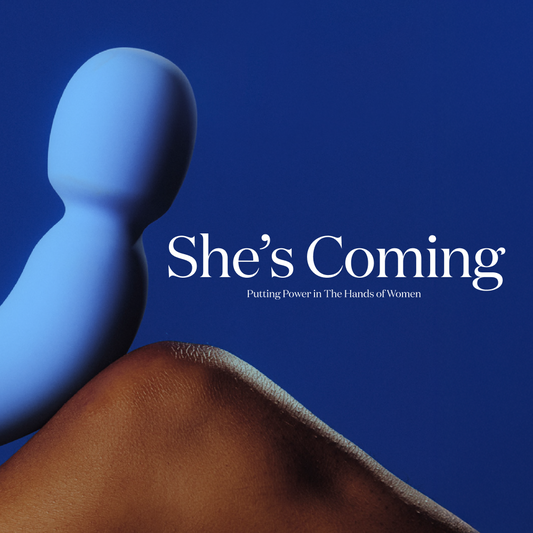If you’re familiar with how lesbians are portrayed in the media, you may believe that they stop having sex once their relationships get serious, and become victims of the dreaded “lesbian bed death.” It’s right up there with the joke that lesbians move in together on the second date. Our culture even has a name for it—“U-Haul lesbian.” This stereotype comes from the harmful, sexist assumption that women don’t like sex and only have sex with men to please them (or when pressured into it). So when there’s no man to “please,” women just wouldn’t choose to have sex. It also relies on the cliche that women connect by sharing all their feelings and emotions with each other until they become so close that they lose their individuality, a necessary ingredient for sexual desire. The fact that “bed death” is limited to lesbians is a myth. Sex can be challenging for all couples in long-term relationships, regardless of your sexual orientation.
Where did “lesbian bed death” come from?
It all started in 1982 when sociologists Pepper Schwartz and Philip Blumstein published a study called American Couples: Money, Work, Sex. Among other things, this study compared the sex lives of heterosexual, gay, and lesbian couples. In this study, they found that lesbians had sex less frequently compared to other couples. Looking back, though, there were huge problems with the study. It included only a very small population size, and the researchers’ definition of sex only included penetration. In reality, many vulva-havers require external stimulation of the clitoris in order to orgasm. Studies have shown that around 75 to 80% of women cannot orgasm from penetration alone, so it makes sense that the women in the 1982 study probably engaged in a lot of sex that wasn’t penetration. Another aspect to consider is whether the lesbian couples during that time believed that the sexual activites they were engaging in even counted as sex at all because there was no penis-in-vagina penetration. The biggest problem with the study? It measured sexual satisfaction by only assessing the frequency of sex that the couples had. In reality, satisfying sex happens as a result of lots of factors.
Frequency of sex ≠ better sexual satisfaction
Frequency of sex is only one way to measure sexual satisfaction or how sexual a couple is. In order to get a better picture, you can measure the duration and quality of sex, the number of orgasms, the feelings of happiness and well-being, and how satisifed the couple is with each other and their sex lives.
Lesbians may have less sex precisely because their sex is longer than the typical heterosexual couple.
Further studies have shown that lesbian couples do, in fact, have sex less frequently than heterosexual couples do. But they also found that lesbians often have sex for much longer, upwards of 30 minutes to an hour compared to heterosexual women, whose average sex session is 8 to 30 minutes. When lesbians do have sex, both partners have orgasms more often than women in heterosexual couples do, and they’re generally more sexually satisfied. Studies have shown this time and time again. Imagine if you had to add all the minutes lesbians had sex in a year and compared it to heterosexual couples. You may find that they have equal to or even more sex minutes in total than heterosexual couples do.
Why do lesbians have less sex than other couples?
Lesbians may have less sex precisely because their sex is longer. There’s often plenty of foreplay and they often make sure that both partners get to have an orgasm. Knowing that the average woman needs 20 to 40 minutes to orgasm, compared to five minutes for men, you can see how the time can build up. Combine this knowledge with a woman’s capacity for multiple orgasms and the sex may never end! Also, it might be that some lesbian couples just don’t need to have sex so frequently if the sex they’re having is intense and satisfying every time. The drawback of this kind of sex is that it takes a significant amount of time and energy, which you may not have every day (even every week) if you have a busy schedule. And that’s okay! What matters is whether you feel sexually satisfied and happy with your relationship.
Desire wanes in all long-term relationships
No matter your gender or sexual orientation, your sexual desire for your partner will decrease over time—some faster than others, but there’s almost always a downward trend. This is okay! This is completely normal! When the lustful honeymoon phase is over, you develop a deeper, more companionship type of relationship with your partner. In this phase, you do experience less lust for each other but the love and intimacy is stronger.
Many women experience responsive desire
There are actually two different types of sexual desire: spontaneous desire and responsive desire. Spontaneous desire is when it really doesn’t take much to get you going—all you need is that look from your partner and suddenly you’re getting it on. Responsive desire, on the other hand, depends on receiving the appropriate stimulation to trigger your sexual desire. With this type of desire, you usually need to get aroused first, before the desire comes. Responsive desire is the most common type of desire in women, especially in long term relationships. So if it takes you some time to get warmed up and in the mood, there’s nothing wrong with you! It just means you have more of a responsive desire type. We’re taught to think that good sex shouldn’t take any effort at all if we’re with the right person. I’m sorry to tell you this, but good sex can take effort. This can become especially challenging in lesbian relationships if both women experience more responsive sexual desire. If you continue to wait for spontaneous sex in this case, you’ll probably never have sex again! This is why it’s so important to prioritize your relationship and your sex life by scheduling regular date nights, and putting effort into keeping the spark alive. Bottom line: Just because you’re in a lesbian relationship, it doesn’t mean that your sex life is doomed. All it takes is understanding how your sexual desire operates and making it work for you as a couple.




















































